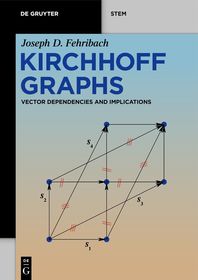
-
5% KEDVEZMÉNY?
- A kedvezmény csak az 'Értesítés a kedvenc témákról' hírlevelünk címzettjeinek rendeléseire érvényes.
- Kiadói listaár EUR 99.95
-
41 454 Ft (39 480 Ft + 5% áfa)
Az ár azért becsült, mert a rendelés pillanatában nem lehet pontosan tudni, hogy a beérkezéskor milyen lesz a forint árfolyama az adott termék eredeti devizájához képest. Ha a forint romlana, kissé többet, ha javulna, kissé kevesebbet kell majd fizetnie.
- Kedvezmény(ek) 5% (cc. 2 073 Ft off)
- Kedvezményes ár 39 381 Ft (37 506 Ft + 5% áfa)
Iratkozzon fel most és részesüljön kedvezőbb árainkból!
Feliratkozom
41 454 Ft

Beszerezhetőség
Még nem jelent meg, de rendelhető. A megjelenéstől számított néhány héten belül megérkezik.
Why don't you give exact delivery time?
A beszerzés időigényét az eddigi tapasztalatokra alapozva adjuk meg. Azért becsült, mert a terméket külföldről hozzuk be, így a kiadó kiszolgálásának pillanatnyi gyorsaságától is függ. A megadottnál gyorsabb és lassabb szállítás is elképzelhető, de mindent megteszünk, hogy Ön a lehető leghamarabb jusson hozzá a termékhez.
A termék adatai:
- Kiadás sorszáma 1
- Kiadó De Gruyter
- Megjelenés dátuma 2025. november 15.
- ISBN 9783111406244
- Kötéstípus Keménykötés
- Terjedelem200 oldal
- Méret 240x170 mm
- Nyelv angol
- Illusztrációk 20 Illustrations, black & white 700
Kategóriák
Hosszú leírás:
Kirchhoff graphs are a new type of graph, one whose edges are vectors. They depict the dependencies in sets of vectors, and in this regard, they are akin to matroids. Indeed every binary matroid is Kirchhoff graphic. If the vectors in the set represent the stoichiometry of a reaction network (chemical, electrochemical or otherwise), a Kirchhoff graph is a circuit diagram for that reaction network. This book discusses the basic definitions for Kirchhoff graphs, their connections to matroids and finite fields, their connections to reaction networks and use as circuit diagrams, Kirchhoff graph uniformity, prime, composite and fundamental Kirchhoff graphs, and the structure of families of Kirchhoff graphs. They been studied by the author and his collaborators since 2005, and this book presents what we have learned in the past twenty years.
Több



